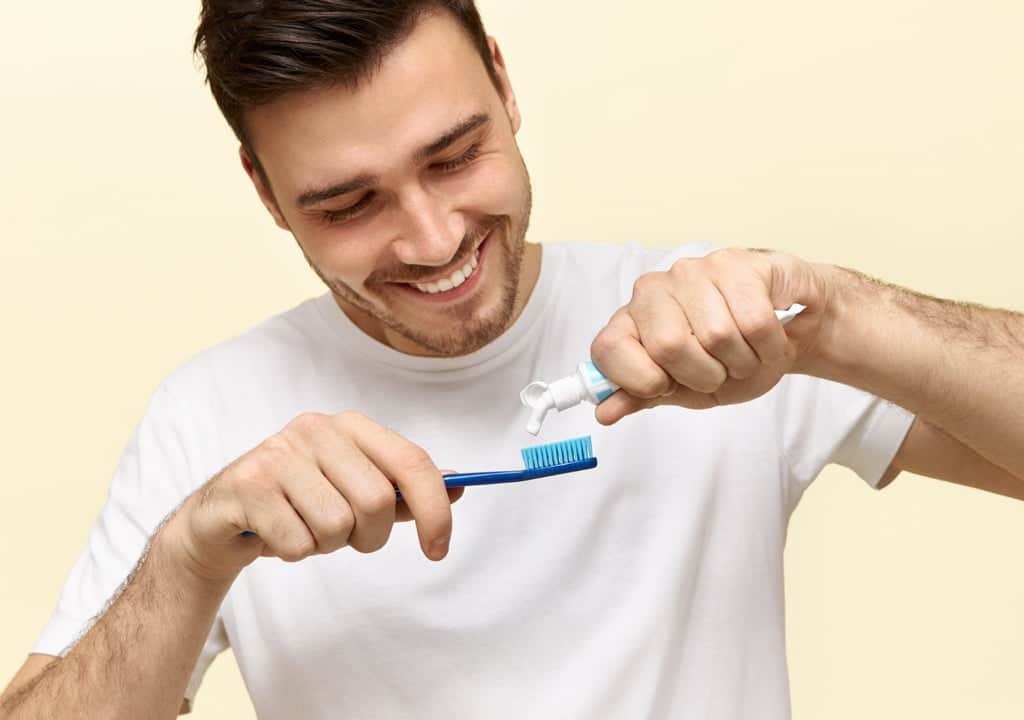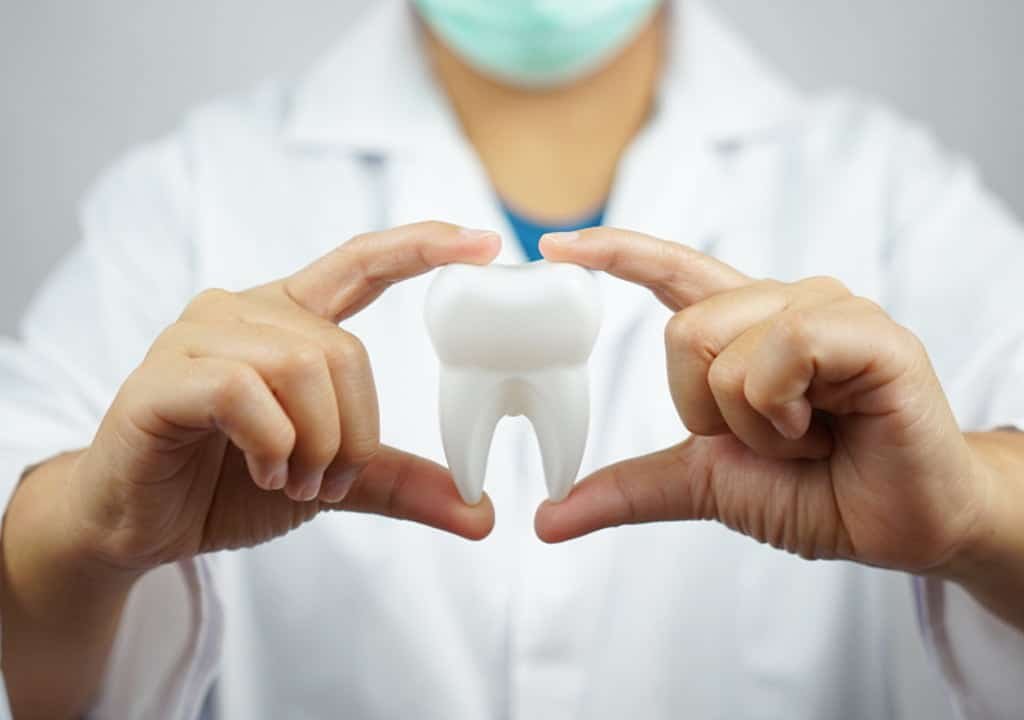One should be active and careful when it comes to oral hygiene. If you love fluoride, the details would be beneficial for you.
Consequences Of Poor Dental Hygiene And Unhealthy Teeth
Blog
The Impact of Poor Oral Hygiene on Your Health
Introduction:
Dental hygiene matters the most because it excels your overall personality. Unhealthy teeth damage your internal as well as external appearance.
We’ve put together this content that explains the Consequences Of Poor Dental Hygiene And Unhealthy Teeth. Be aware and take care of your teeth.
[1]You’ve heard that classic ditty that talks about your bones, right? Your toe bone is connected to your foot bone, which is connected to your heel bone, and so forth. While that speaks to your skeletal system, your entire body is interconnected similarly. What this means in dental terms is that your dental health can affect your overall health. While a cavity may not affect your endocrine system, severe gum disease could impact your health well beyond your mouth. Note how your oral health can affect your well-being below and what you can do about it today.
[2]Facts About Dental And Oral Health
Dental cavities and gum disease are very common. According to the World Health Organization Trusted Source:
- Between 60 and 90 percent of school children have at least one dental cavity
- Nearly 100 percent of adults have at least one dental cavity
- Between 15 and 20 percent of adults ages 35 to 44 have severe gum disease
- About 30 percent of people around the world ages 65 to 74 don’t have any natural teeth left
- In most countries, out of every 100,000 people, there are between 1 and 10 cases of oral cancer
- The burden of oral disease is much higher in poor or disadvantaged population groups
There are many steps you can take to keep your teeth healthy. For example, dental and oral disease can be greatly reduced by:
- Brushing your teeth with fluoride toothpaste at least twice a day
- Flossing your teeth at least once a day
- Decreasing your intake of sugar
- Eating a diet high in fruits and vegetables
- Avoiding tobacco products
- Drinking fluoridated water
- Seeking professional dental care
[3]Oral Health Conditions
Oral health refers to the health of the teeth, gums, and the entire oral-facial system that allows us to smile, speak and chew. Some of the most common diseases that impact our oral health include cavities (tooth decay), gum (periodontal) disease, and oral cancer.
More than 40% of adults report having felt pain in their mouth within the last year, and more than 80% of people will have had at least one cavity by age 34. The nation spends more than $124 billion on costs related to dental care each year. On average, over 34 million school hours and more than $45 billion in productivity are lost each year as a result of dental emergencies requiring unplanned care.
Oral conditions are frequently considered separate from other chronic conditions, but these are actually interrelated. Poor oral health is associated with other chronic diseases such as diabetes and heart disease. The oral disease also is associated with risk behaviors such as using tobacco and consuming sugary foods and beverages.
Public health strategies such as community water fluoridation and school sealant programs are safe and effective interventions proven to prevent cavities and save money.
Cavities (Tooth Decay)
Cavities are caused by a breakdown of the tooth enamel by acids produced by bacteria located in plaque that collects on teeth, especially along the gum line and in the crevices on the chewing surfaces of the teeth. Eating and drinking foods high in carbohydrates cause this bacteria to produce the acids that can cause the outer coating of the tooth (enamel) or root surface to break down (demineralize).
Although cavities are largely preventable, they are one of the most common chronic diseases throughout their lifespan. Untreated tooth decay can lead to an abscess (a severe infection) under the gums which can spread to other parts of the body and have serious, and in rare cases fatal, results.
More than half of children aged 6 to 8 have had a cavity in at least one of their baby (primary) teeth.
- Up to 10% of children aged 2 to 5 have untreated cavities.
- More than half of adolescents aged 12 to 19 have had a cavity in at least one of their permanent teeth.
- One-quarter of adults aged 20 to 64 have untreated cavities.
- More than 90% of adults have had a cavity.
- Community water fluoridation and school dental sealants programs are both cost-saving, proven strategies to prevent cavities.
Gum (Periodontal) Disease
About 4 in 10 adults aged 30 years or older had gum (periodontal) diseases in 2009–2014.5 Gum disease is mainly the result of infections and inflammation of the gums and bone that surround and support the teeth. Certain chronic conditions increase one’s risk for periodontal disease including diabetes, a weakened immune system, poor oral hygiene, and heredity. Tobacco use is also an important risk factor for gum disease. If early forms of periodontal diseases are not treated, the bone that supports the teeth can be lost, and the gums can become infected. Teeth with little bone support can become loose and may eventually have to be extracted.
Oral Cancer
In 2016, there were nearly 45,000 new cases of cancer of the oral cavity and pharynx diagnosed in the United States and more than 10,000 deaths. The 5-year survival rate for these cancers is about 61 percent. The mortality rate from oral cancer is nearly three times as high in males as it is in females (4 vs 1.4 for every 100,000 people) and nearly twice as high in white and black populations as it is in the Hispanic population (2.6 vs. 1.5 for every 100,000 people).6 Preventing high-risk behaviors, that include cigarette, cigar, or pipe smoking, use of smokeless tobacco, and excessive use of alcohol are critical in preventing oral cancers. Early detection is key to increasing the survival rate for these cancers.
Oral Human Papilloma Virus (HPV), the most common sexually transmitted disease, can cause cancers in the back of the throat, called “oropharyngeal cancers.” More research is needed to determine whether HPV itself causes oropharyngeal cancers, or if other factors (such as smoking or chewing tobacco) interact with HPV to cause these cancers.
Conclusion:
The content explains all the scenarios related to poor dental hygiene and unhealthy teeth. All the possible ways are explained but never bound yourself. Keep looking for the best suggestions for your good oral health.
For Assistance, Visit https://appletreedental.ca/
Article compiled by https://appletreedental.ca/
Article Reference Links:
| https://www.cdc.gov/oralhealth/conditions/index.html |
Soothing Sensitive Teeth from Summertime Sweets
Blog
How to Soothe Sensitive Teeth This Summe
Introduction:
Sensitive teeth increase discomfort and people would not be able to behave properly. Using some smart tips you can minimize the discomfort.
We’ve put together this content that explains Soothing Sensitive Teeth from Summertime Sweets. Be aware and take care of your teeth.
[1]For many people, warmer weather means ice cream, Popsicles, and plenty of cold drinks. For people who have sensitive teeth, however, it’s not so easy to indulge in traditional summertime sweets. If you suffer from tooth sensitivity, here’s how you can ease your discomfort.
Understanding The Cause
According to the Journal of the American Dental Association, one in eight adults suffers from some form of tooth sensitivity. Most of the time, this stems from cavities, worn enamel, receding gums or decaying dental work. Discomfort tends to amplify when affected areas come into contact with hot or cold foods and beverages. In turn, many people are forced to avoid some of their favorite indulgences, because they simply cannot tolerate the pain.
Getting Relief
If you suffer from tooth sensitivity, there are a few things you can do to reduce discomfort, including:
- Strengthen enamel by brushing daily with fluoride-enriched toothpaste.
- Avoid acidic foods and drinks, which can exacerbate pain and wear down tooth enamel.
- Avoid smoking or chewing tobacco, which also contributes to tooth sensitivity.
- Use a soft-bristled toothbrush, which is less abrasive than hard-bristled brushes.
- Avoid over-the-counter whitening agents, which can thin tooth enamel.
According to the American Dental Association, desensitizing toothpaste can also help reduce discomfort because they contain compounds that block sensation traveling from the tooth surface to the nerve. If desensitizing toothpaste prove ineffective, dentists generally recommend in-office treatments involving fluoride gels or special desensitizing agents. If this proves ineffective, fillings, crowns, inlays or bondings may be needed to treat decay or correct other underlying causes. In some cases, people require surgical gum grafts to replace lost gum tissue, protect the root and reduce sensitivity.
[2]Ways To Soothe Your Sensitive Teeth From Summer Sweets
Having sensitive teeth is something that occurs very often, especially during the summertime, when people tend to indulge in sweets like ice cream, popsicles, and candy bars. When you consume too many sweets, your teeth sometimes become very sensitive, which makes it hard to chew, or even enjoy beverages. The good news for people suffering from sensitive teeth is that it doesn’t require a trip to the dentist, unless it is severe and persistent, because there are a few things you can do to treat the issue, which is listed below.
Practice Good Oral Care
This is the best advice you will ever get from a dentist. If you brush your teeth at least twice a day, and floss daily, while making regular trips to your dentist’s office, you can prevent situations like this from occurring.
Switch To Toothpaste Made For Sensitive Teeth
If your teeth are sensitive, an easy cure for it is to change the toothpaste that you are currently using, to one that is designed for sensitive teeth. After using it regularly for a period of time, the sensitivity in your teeth will gradually reduce.
Use Dental Products That Have Fluoride
When it comes to sensitive teeth, fluoride is a big deal because it can help strengthen the surface of your teeth which has been affected by bacterial acids over the years. You should check to make sure that both your toothpaste and mouthwash have fluoride, to reduce any sensitivity that you are feeling.
Use A Soft Bristle Toothbrush
Using a soft bristle toothbrush helps to keep your teeth’s protective layer as strong as possible because you aren’t scrubbing away the enamel protecting your teeth. Instead, it helps you clean your mouth without causing damage to your teeth and gums.
Avoid Acidic Foods And Drinks
If you have sensitive teeth, you should stay away from acidic foods like fruits, and drinks like wine and soft drinks, because they add to the pain and sensitivity that you are feeling. Some sugary foods can also have the same effects, so you will also have to sacrifice those to reduce the sensitivity of your teeth.
Avoid Smoking And Chewing Tobacco
Like acidic foods and drinks, smoking and chewing tobacco also contribute to the sensitivity of your teeth, so you should stay away from them also.
These are a few things that you should do if you are experiencing sensitive teeth, and most of the time, they do work. If your pain is persistent, you should make an appointment to see your dentist, who will be able to help you reduce the sensitivity.
Conclusion:
The content explains all the scenarios related to sensitive teeth. All the possible ways are explained but never bound yourself. Keep looking for the best suggestions for your good oral health.
For Assistance, Visit https://appletreedental.ca/
Article compiled by https://appletreedental.ca/
Article Reference Links:
-
https://www.interdent.com/mdco/blog/soothing-sensitive-teeth-from-summertime-sweets/ ↑
-
https://danawaltersdds.com/blog/ways-to-soothe-your-sensitive-teeth-from-summer-sweets/ ↑
Emergency Dental Services All Services
FAST & RELIABLE EMERGENCY DENTAL SERVICES
Dental Care Services All Services
COMPREHENSIVE DENTAL CARE SERVICES FOR ALL
Pain Free Dentistry All Services
PAIN-FREE DENTISTRY: COMFORTABLE CARE FOR EVERY PATIENT
4 Common Oral Hygiene Mistakes Women Make
Blog
4 Common Oral Hygiene Mistakes Women Make
Introduction:
[1]Oral hygiene mistakes often create bigger problems. Many women do the same mistakes and don’t pay attention to their oral well-being.
We’ve put together this content that explains 4 common oral hygiene mistakes made by women. Be aware and take care of your teeth.
Did you know that your oral health is largely connected to your overall health and well-being? Common oral hygiene mistakes and what you can do to correct them to have better oral and overall health.
Not maintaining good oral hygiene.
The worst mistake that you can make for your mouth is poor oral hygiene. Follow these recommendations daily for better oral health:
Brush regularly
Brush your teeth for at least two minutes at least twice a day – or even better, within 20 minutes of eating. Use a smooth or soft toothbrush with an American Dental Association (ADA) approved toothpaste with fluoride.
Floss daily
Floss your teeth at least once a day. Flossing is just as important as brushing as it gets little pieces of food unstuck from between your teeth and removes plaque and bacteria that cause decay and periodontitis (gum disease).
Use mouthwash
Consider finishing your oral hygiene routine with fluorinated mouthwash. Mouthwash can help clean areas in and around the gums and re-mineralize the teeth. Avoid alcohol-based mouthwashes as they dry out the mouth, which may lead to tooth decay.
Drink water
Water is the best beverage for keeping your mouth healthy and hydrated. If you are looking for a drink other than water, avoid acidic beverages such as citrus juices, soft drinks, and wine. The acid in the beverages can etch, or roughen up, the enamel. When the enamel gets etched, it collects plaque and bacteria easier, which causes the enamel to be eroded, resulting in tooth decay.
[2]Not having regular dental check-ups.
See your dentist for regular checkups and cleanings. You should be seeing the dentist every six months so that any issues can be caught early and your teeth can be cleaned by a professional.
Snacking
“Frequent snacking can raise a person’s risk for getting cavities, especially if the snacks contain sugar or starches,” Dr. Nagham Altalib says. “An occasional sweet treat is fine, but the prolonged, repeated exposure of teeth to sugar and other carbohydrates will accelerate both the start and growth of cavities.”
Eating acidic foods at night
“The acid stokes up the fire, the pitta dosha, keeping the saliva acidic, which in turn affects the health of the gums,” says Stoffer. “At night, it’s better to eat early, say at least two hours before going to bed, so the digestion works well and the state of the mouth returns to normal.”
Conclusion:
We hope the content lets you understand oral health mistakes. All the possible ways are explained but never bound yourself. Keep looking for the best suggestions for your good oral health.
For Assistance, Visit https://appletreedental.ca/
Article compiled by https://appletreedental.ca/
Article Reference Links:
What Crowns and Veneers Can’t Do
Blog
What Crowns and Veneers Can’t Do
Introduction:
[1]Veneers and crowns are both dental restoration methods that can improve the look and function of your teeth. The main difference is that a veneer covers only the front of your tooth and a crown covers the entire tooth.
Dental restoration procedures are costly, so it’s important to know which one may be best for you. Although the procedures are different, both have good success rates.
Here’s a look at the differences between veneers and crowns, the pros and cons of each, and how they’re used.
What’s The Difference Between A Veneer And A Crown?
A veneer is a very thin layer of porcelain or other materials, about 1 millimeter (mm) in thickness, that’s bonded to the front of your existing tooth.
A crown is about 2 mm in thickness and covers the whole tooth. It can be all porcelain, porcelain fused to a metal alloy (PFM), or an all-metal alloy.
Whether a veneer or a crown is right for you will depend on the condition of your teeth and what you’re trying to fix. Common conditions for restoration are:
- Discolored Teeth
- Chipped, Cracked, Or Broken Teeth
- Decayed Or Weakened Teeth
- Crooked Teeth
Both crowns and veneers are color matched to your teeth, except for all-metal crowns.
What Is A Veneer?
A veneer covers only the front surface of your tooth. They’re not as invasive as crowns, because the preparation leaves more of your original tooth intact.
About half a millimeter of the enamel on the front of the tooth is ground down to roughen the surface for bonding the veneer. Some newer types of veneers don’t need as much grinding of the tooth surface. You may need a local anesthetic for this, because the grinding may be painful.
For a veneer to work properly, your tooth has to have enough enamel on it for a veneer to bond to it.
What Is A Crown?
A crown covers the entire tooth. With a crown, more of the tooth needs to be filed or ground down to prepare for the crown placement.
If you have tooth decay, your dentist will remove the decayed part of the tooth before making the crown. In this case, your tooth may need to be built up to support the crown.
Your tooth may also need to be built up if it’s damaged. You may have a local anesthetic for this procedure.
[2]Foods To Avoid While Wearing Temporary Veneers
It generally takes a few weeks for the lab to construct your permanent veneers. During this time, Dr. Nagham Altalib will provide you with temporary veneers. These are more delicate since they aren’t permanently bonded to your teeth. This makes it much easier to damage them.
In order to avoid damaging your temporary restoration, you should avoid the following foods:
- Steak and other meats that may be difficult to chew
- Ice (you should never chew on ice, regardless of whether you have veneers)
- Hard bread
- Hard foods such as nuts, seeds, or chips
- Crunchy vegetables such as carrots and celery
- Hard candies
- Sticky candies
- Chocolate
- Foods and beverages which may stain your teeth
- Foods To Avoid With Permanent Veneers
Your permanent veneers will be securely bonded to the front surface of your teeth, making them much more durable than the temporary veneers you initially received. This will eliminate many of the food restrictions listed above. However, it is still important to be conscious of what you’re eating in order to prolong the lifespan of your porcelain veneers.
Some Foods To Avoid With Permanent Veneers Include:
- Hard foods which may chip the dental porcelain (when eating foods like chicken legs or bone-in steak, make sure you don’t bite too close to the bone)
- Ice
- Alcohol (excessive alcohol consumption can ruin the bonding material and cause your veneers to become less secure)
- Acidic foods and beverages such as lemonade, citrus fruits or tomato sauce (these items can erode the bonding material)
- Sticky candies
- Foods and beverages which may stain your teeth
Conclusion:
We hope the content lets you understand oral health. All the possible ways are explained but never bound yourself. Keep looking for the best suggestions for your good oral health.
For Assistance, Visit https://appletreedental.ca/
Article compiled by Apple Tree Dental
Article Reference Links:
Role Of Nutrition In Preventing Tooth Cancer
Blog
Role Of Nutrition In Preventing Tooth Cancer
Introduction:
One should be active and careful when it comes to oral hygiene. Sometimes silly ignorance may create problems like cancer.
We’ve put together this content that explains the Role Of Nutrition In Preventing Tooth Cancer. Be aware and take care of your teeth.

[1]Oral health is related to diet in many ways, for example, nutritional influences on craniofacial development, oral cancer, and oral infectious diseases. Dental diseases impact considerably self-esteem and quality of life and are expensive to treat. The objective of this paper is to review the evidence for an association between nutrition, diet, and dental diseases and to present dietary recommendations for their prevention.
Nutrition affects the teeth during development and malnutrition may exacerbate periodontal and oral infectious diseases. However, the most significant effect of nutrition on teeth is the local action of diet in the mouth on the development of dental caries and enamel erosion. Dental erosion is increasing and is associated with dietary acids, a major source of which is soft drinks.
Despite improved trends in levels of dental caries in developed countries, dental caries remains prevalent and are increasing in some developing countries undergoing the nutrition transition. There is convincing evidence, collectively from human intervention studies, epidemiological studies, animal studies, and experimental studies, for an association between the amount and frequency of free sugars intake and dental caries. Although other fermentable carbohydrates may not be totally blameless, epidemiological studies show that consumption of starchy staple foods and fresh fruit are associated with low levels of dental caries. Fluoride reduces caries risk but has not eliminated dental caries and many countries do not have adequate exposure to fluoride. It is important that countries with a low intake of free sugars do not increase intake, as the available evidence shows that when free sugars consumption is <15-20 kg/yr ( approximately 6-10% energy intake), dental caries is low.
For countries with high consumption levels, it is recommended that national health authorities and decision-makers formulate country-specific and community-specific goals for reducing the number of free sugars aiming towards the recommended maximum of no more than 10% of energy intake. In addition, the frequency of consumption of foods containing free sugars should be limited to a maximum of 4 times per day. It is the responsibility of national authorities to ensure the implementation of feasible fluoride programs for their country.
[2]Overview of Nutrition in Cancer Care
Key Points
- Good nutrition is important for cancer patients.
- Healthy eating habits are important during and after cancer treatment.
- A registered dietitian is an important part of the healthcare team.
- Cancer and cancer treatments may cause side effects that affect nutrition.
- Cancer and cancer treatments may cause malnutrition.
- Anorexia and cachexia are common causes of malnutrition in cancer patients.
- Good nutrition is important for cancer patients.
Nutrition is a process in which food is taken in and used by the body for growth, to keep the body healthy, and to replace tissue. Good nutrition is important for good health. A healthy diet includes foods and liquids that have important nutrients (vitamins, minerals, protein, carbohydrates, fat, and water) the body needs.
A Registered Dietitian Is An Important Part Of The Healthcare Team.
A registered dietitian (or nutritionist) is a part of the team of health professionals that help with cancer treatment and recovery. A dietitian will work with patients, their families, and the rest of the medical team to manage the patient’s diet during and after cancer treatment.
Research has shown that including a registered dietitian in a patient’s cancer care can help the patient live longer.
Cancer And Cancer Treatments May Cause Side Effects That Affect Nutrition.
Nutrition problems are likely when tumors involve the head, neck, esophagus, stomach, intestines, pancreas, or liver.
For many patients, the effects of cancer treatments make it hard to eat well. Cancer treatments that affect nutrition include:
- Chemotherapy.
- Hormone therapy.
- Radiation therapy.
- Surgery.
- Immunotherapy.
- Stem cell transplant.
Cancer And Cancer Treatments May Cause Malnutrition.
Cancer and cancer treatments may affect the taste, smell, appetite, and ability to eat enough food or absorb the nutrients from food. This can cause malnutrition, which is a condition caused by a lack of key nutrients. Alcohol abuse and obesity may increase the risk of malnutrition.
Malnutrition can cause the patient to be weak, tired, and unable to fight infection or finish cancer treatment. As a result, malnutrition can decrease the patient’s quality of life and become life-threatening. Malnutrition may be made worse if cancer grows or spreads.
Eating the right amount of protein and calories is important for healing, fighting infection, and having enough energy.
Anorexia And Cachexia Are Common Causes Of Malnutrition In Cancer Patients.
Anorexia is the loss of appetite or desire to eat. It is a common symptom in patients with cancer. Anorexia may occur early in the disease or later if cancer grows or spreads. Some patients already have anorexia when they are diagnosed with cancer. Most patients who have advanced cancer will have anorexia. Anorexia is the most common cause of malnutrition in cancer patients.
Cachexia is a condition marked by weakness, weight loss, and fat and muscle loss. It is common in patients with tumors that affect eating and digestion. It can occur in cancer patients who are eating well but are not storing fat and muscle because of tumor growth.
Some tumors change the way the body uses certain nutrients. The body’s use of protein, carbohydrates, and fat may change when tumors are in the stomach, intestines, or head and neck. A patient may seem to be eating enough, but the body may not be able to absorb all the nutrients from the food.
Cancer patients may have anorexia and cachexia at the same time.
Conclusion:
We hope the content lets you understand oral health. All the possible ways are explained but never bound yourself. Keep looking for the best suggestions for your good oral health.
For Assistance, Visit https://appletreedental.ca/
Article compiled by Apple Tree Dental
Article Reference Links:
- https://pubmed.ncbi.nlm.nih.gov/14972061/ ↑
- https://www.cancer.gov/about-cancer/treatment/side-effects/appetite-loss/nutrition-pdq ↑








